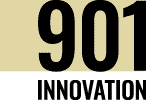(“The Journey of No” is part of the Alternate World Collection)
And so, it begins. We are bestowed life and thus are immediately placed upon the Journey of “No.”
Phase 1: Go for It
 This phase starts so innocently, shortly after we’re born, typically when we can control our hands and arms just enough to place dangerous objects in our mouth. Clearly a safety concern, yet still our first introduction to a word that will be with us through life – “no.” It starts sweetly enough as a “no, no, no” with a coo and a smile. Then, depending on the environment, patience and general happiness of our parents or family, it evolves into firmer and less cuddly “No’s.” As our motor skills progress and the gift of speech develops, our natural inquisitiveness flourishes and we seek to touch, feel, eat and ask for everything. Hearing “no” will now be a staple in our daily routine.
This phase starts so innocently, shortly after we’re born, typically when we can control our hands and arms just enough to place dangerous objects in our mouth. Clearly a safety concern, yet still our first introduction to a word that will be with us through life – “no.” It starts sweetly enough as a “no, no, no” with a coo and a smile. Then, depending on the environment, patience and general happiness of our parents or family, it evolves into firmer and less cuddly “No’s.” As our motor skills progress and the gift of speech develops, our natural inquisitiveness flourishes and we seek to touch, feel, eat and ask for everything. Hearing “no” will now be a staple in our daily routine.
Phase 2: You are Ours Now
The least admirable stage. Here is where we unwittingly accept ou r fate and embrace the power of no. This is Young Skywalker being seduced by the Dark Side. In this phase we are quite young and have found our voice. “No” is our favorite new word. Mind you, a word that we learned. “Eat your peas.” “No.” “Put on your pants.” “No.” “Come and get onto the bath.” “No.” Go to sleep.” “No.” Fortunately, for others in our life, it does not last long, however the impact is severe, as we have been indoctrinated. Now we do not only receive “no,” we bestow it.
r fate and embrace the power of no. This is Young Skywalker being seduced by the Dark Side. In this phase we are quite young and have found our voice. “No” is our favorite new word. Mind you, a word that we learned. “Eat your peas.” “No.” “Put on your pants.” “No.” “Come and get onto the bath.” “No.” Go to sleep.” “No.” Fortunately, for others in our life, it does not last long, however the impact is severe, as we have been indoctrinated. Now we do not only receive “no,” we bestow it.
Phase 3: Playing the Odds
As life progresses and our minds develop, we begin to foresee outcomes. We know that a certain action or question will elicit a response, that depending on who the responder is in relation to us, will dictate what we can predict happening. At first, it is Mom or Dad. Who will react more favorably to my request for ice cream, for going to my friend Jimmy’s house, for getting a new video game? As we enter school, it is teacher vs. teacher. Is it Miss Sweetpearl or Mrs. Dreamdasher that will give me more time to submit my final project? We quickly become very adept at avoiding a “no” by playing the odds. Though still on the Journey of No, there are positive aspects in this phase. We are honing some amazing strategic thinking skills.
Phase 4: Ah Screw It

Phase 5: Beg for Forgiveness
Here’s some good news. This phase can be fun, even though it is kind of bad. This is where we know that “No” is inevitable, so instead of asking, we act fully aware that we will have to beg for forgiveness. For some this happens early on. “But dad, I needed to take Justin his laptop, so I had to borrow the car.” A more common timeline is when we’re in a committed relationship. “Honey, guess what I bought today?” Also, quite common, is the workplace beg-for-forgiveness scenario. Typically happens when the boss is a chronic “Mr. No.” This is when you are mindful of your facial expressions. Complete surprise being the preferred look. “Oh, I thought you would want our ideas included on the Simpson proposal.” Every time, the beg-for-forgiveness act is a calculated risk. Most times it will work, but if repeated, it can be hazardous to relationships and careers.
Phase 6: The Hell with It

There is a Better Way
In an Alternate World, the Journey is “Yes, and.” Here you still learn the difference between yes and no, especially in those early years when safety is paramount. But in the Alternate World, “Yes” is far more common than “No.”
The closest thing we have in our world is improvisation. If you watch a great comedy Improv troupe perform, you will see that they always accept what is given. Their main tenet is “yes, and.” I love performing improv with my buddies in our band of misfits called Klaatu, particularly when Pete and Dave jump up on stage. We ask the audience for a relationship two people could possibly have and often get the suggestion “coworkers.” Pete and Dave now must make up a scene about coworkers. Pete would immediately start visualizing what he sees as coworkers, perhaps primping his hair, ready to strut out and establish them as rock stars in a band, when Dave suddenly steps forward and begins a scene with them as janitors in a fertilizer plant. Pete adjusts. He simply internalizes “yes, and,” accepts what Dave has established, and off they go. It always works, and it’s usually funny as all get go.
Many corporate types profess to embrace “yes, and” when they brainstorm. However, are they really doing it? Half the time team’s gather to brainstorm and most of the group is voluntold to be there. There’s a high probability that some are entering the room not wanting to even be there. That’s a “no.” Then the room itself is often a boring conference room, where memories of unpleasant experiences abound. Yep, another subliminal form of “no.” Then, finally how many times will someone say “yes, but” (still, a big fat way of saying NO!) Meh, don’t beat yourselves up. It’s the journey we’ve all been placed on, the minute we were born. Try some improv before your next brainstorming session. Pick up a book by Greg Sullivan, the founder of Klaatu, called “There’s no I in Improv.” It’s loaded with improv games and exercises that promote the “yes, and” mindset.
Now Ask Yourself
Are you prone to “No?” Have you squelched other’s optimism? Have you stopped yourself because an internal voice said “no?” If so, break from the journey. Close your eyes. See yourself buckled into a revolutionary form of space craft that will transport you around the Sun to the Alternate Earth. Once there, enjoy the confidence and happiness that surrounds you. Then, say “yes” every chance you get. Another great book is “The Speed of Trust” by Stephen M. R. Covey. It shows the power of saying yes in the work environment.
Realize that it is not an easy thing to stray from the “Journey of No.” Yet if you can, you will leave a journey that is riddled with suppression, feelings of failure and tons of missed opportunities. By embarking on the “Yes, And Journey” you will be delighted with confidence, amazing outcomes and happiness! Yes, and!



Leave A Comment